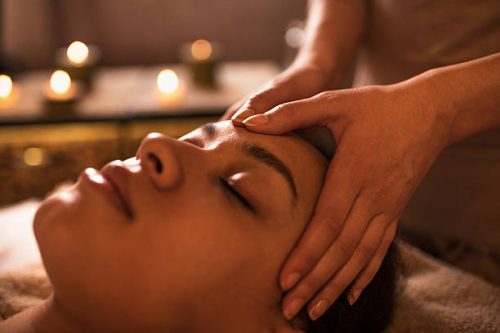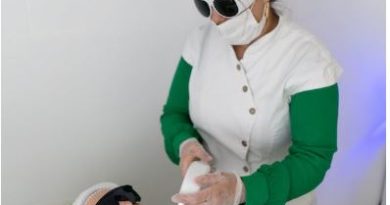8 Holistic Therapies Based on Science
The human body is infinitely complex. While western medicine tends to treat problems — a broken bone, a high cholesterol level — other cultures treat their approach to care differently. They treat the entire person, body and mind, using far more modalities than a pill bottle or cast.
Holistic medicine has the power to cure because it doesn’t only address surface pain. It addresses the underlying imbalances that lead to poor health outcomes. Here are eight holistic therapies based on science that you might consider adding to your healing regimen.
Contents
1. Hallucinogens
Can going on a “trip” help cure depression? Recent scientific evidence suggests that the answer is yes. Recently, several headlines boast of the power of hallucinogens when it comes to tackling otherwise intractable mood disorders.
One such methodology involves the use of ketamine in treating depression and post-traumatic stress disorder. This substance works as a hallucinogen and tranquilizer, increasing neural activity in various brain regions — including those associated with positive emotions. As such, it can help you see your experiences through a new lens, not the distorted view often understandably seen in those who have gone through trauma.
2. Massage
Massage therapy can do everything from easing muscles sore from exercise to alleviating migraines. The trick is finding the right therapist. One of the best ways to do so is word of mouth — talking to other people who have had a positive experience with the same practitioner improves your chances of finding the help you need.
Your first session should start with a consultation. Inform your therapist about any ongoing issues that you have, including any medical conditions. Your practitioner should ask you about your goals for your treatment. Speak up.
With most holistic therapies, it takes several treatments before you achieve lasting relief. However, you should feel divine after your first massage. The human touch element also helps ease the mental anguish of those battling loneliness.
3. Acupuncture
Acupuncture has approximately 3,000 years of testimony backing up its efficacy. Few medical treatments can boast such a track record.
In this procedure, your technician uses tiny needles to activate your chi or vital life energy, eliminating blockages and restoring the body to balance. Western scientists believe the process works by activating various nerve channels to ease pain.
If you hesitate because of the needle factor, you could try acupressure, which uses the same points without any sharp objects. However, the ones used in the traditional practice are smaller than a human hair. You shouldn’t feel pain with insertion.
4. Biofeedback
Biofeedback is a way of training your brain to induce the physiological processes that help ease chronic pain. Ancient yogis used these techniques to regulate their heart rate, and you can likewise learn to control many of your bodily functions.
Traditional biofeedback entails going to a lab and using monitoring methods like electroencephalography (EEG) or sensors to detect physiological reactions that you then work to control. However, you can experiment at home. The next time you have a fright that gets your heart pumping, try using deep breathing to calm yourself.
5. Nutritional Interventions
Everything you put in your body affects your body and mind. This statement applies to the foods you eat. Changing your diet can make a significant difference in your overall health.
For example, over 80 million Americans currently live with a prediabetic condition, often without knowing it. Letting it advance to Type 2 diabetes increases their risk of heart disease and kidney failure. However, you can prevent this disorder by reducing or eliminating foods high in white flour, sugar and other additives, reducing your overall carbohydrate intake and increasing your exercise quotient.
Other conditions likewise respond well to nutritional therapy. For example, some patients with IBS have considerable success on the low FODMAP diet. FODMAPs are types of carbohydrates that can ferment in the gut and cause distress in sensitive individuals.
6. Yoga
Movement therapy isn’t as unusual as it sounds. Stretching and toning your body prompts you to release endorphins, natural opioid-like chemicals that ease mild pain and produce a sense of euphoria. Some forms of yoga, such as yin, are gentle enough that even folks confined to bed can do them.
Stretching also prompts your body to produce hyaluronic acid, a potent joint mobility helper. This substance helps keep your fascia, thick connective tissue bands, hydrated and flexible, leading to reduced pain from conditions like iliotibial (ITB) band syndrome.
7. Sound Healing
Could listening to the right frequencies heal your DNA? Proponents of sound therapy believe so.
At the microscopic level, your body remains in perpetual motion. Molecules make up every tissue, with electrons spinning endlessly around nuclei. Practitioners believe that when these vibrate in the right way, measured in Hertz, you experience DNA healing and improved general health.
8. Cupping
When Michael Phelps swam in the 2016 Olympics, many enthusiasts noticed his body covered in strange red marks. He wasn’t bitten repeatedly — he had performed cupping therapy.
Cupping works similarly to a massage in reverse. Instead of pressing on muscles and connective tissues, practitioners use cups to pull the fibers. The result is improved flexibility and shortened recovery time among athletes. Some people also swear by the technique for treating chronic pain.
Try One of These 8 Science-Based Holistic Therapies
Holistic medicine works by treating underlying imbalances in your body that lead to pain and poor health outcomes. Why not try adding one of these eight science-based therapies to your regimen?




